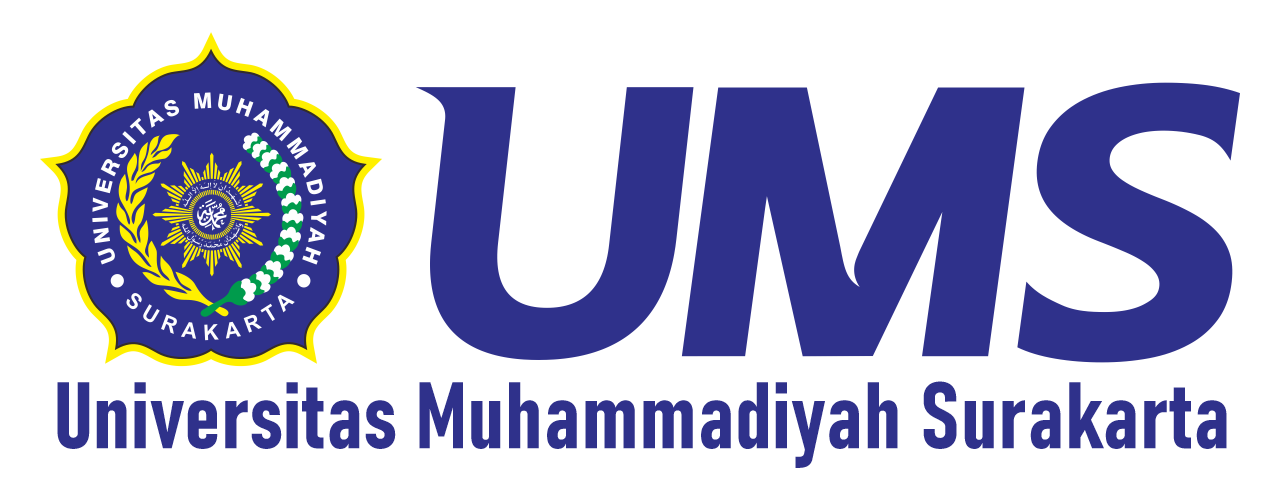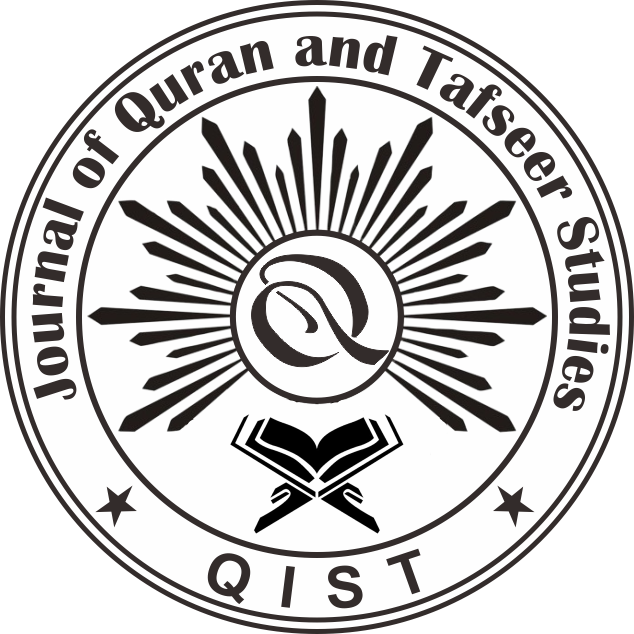A Quranic Framework for the Integrated Economy of Hajj
DOI:
https://doi.org/10.23917/qist.v4i2.12192Keywords:
Hajj, Islamic Economics, Tafsir, Pilgrimage Economy, Economic TheologyAbstract
While the Hajj pilgrimage has significant economic dimensions, these are often underexamined from a theological perspective. This study aims to delineate the economic benefits of the Hajj as an integral component of its divine design. Adopting a qualitative, library-based methodology, this research performs a thematic analysis of the exegesis (tafsīr) of key Quranic passages, primarily from Surah Āli 'Imrān, Surah Al-Baqarah, and Surah Al-Hajj, to construct a holistic economic framework. The findings reveal a consistent Quranic theme that integrates economic activity into the pilgrimage. This is presented in a three-phase model: (1) Pre-Hajj economic mobilization, divinely catalyzed by the principle of financial capability (istiṭā'ah); (2) During-Hajj commerce, explicitly sanctioned as seeking "bounty" and witnessing "benefits" (manāfi'); and (3) a Post-Hajj sustained global economic cycle, rooted in the Quranic vision of a worldwide gathering. The central argument is that these economic facets are not incidental but are foundational to the Hajj's divinely ordained purpose. This study contributes a robust theological framework that moves beyond the spiritual-versus-material debate, establishing the Hajj as an integrated spiritual-economic institution that requires a holistic understanding.
References
[1] G. Paché, "Urban Logistics Associated With Religious Tourism: The Case of the Hajj in Mecca, Saudi Arabia," J. Strateg. Innov. Sustain., vol. 18, no. 3, 2023, doi: https://doi.org/10.33423/jsis.v18i3.6496.
[2] H. Jokhdar, A. Khan, S. Asiri, W. H. Motair, A. M. Assiri, and M. K. Alabdulaali, "COVID-19 Mitigation Plans During Hajj 2020: A Success Story of Zero Cases," Heal. Secur., vol. 19, no. 2, pp. 133-139, 2021, doi: https://doi.org/10.1089/hs.2020.0144.
[3] M. Moscatelli, "Heritage as a Driver of Sustainable Tourism Development: The Case Study of the Darb Zubaydah Hajj Pilgrimage Route," Sustainability, 2024, doi: https://doi.org/10.3390/su16167055.
[4] M. Alesa, "Trade in Hajj in the Umayyad State 41-132H / 661-750M," J. Philos. Cult. Relig., vol. 34, pp. 33-35, 2017.
[5] V. Shkunov, "TATAR MERCHANTS IN THE MARKETS OF THE NEAR AND MIDDLE EAST IN THE XIX CENTURY," Izv. Samara Sci. Cent. Russ. Acad. Sci. Hist. Sci., 2024, doi: https://doi.org/10.37313/2658-4816-2024-6-1-130-138.
[6] D. Hariyanto, K. Marijan, D. M. B. Utomo, Nur, Maghfirah, and Aesthetika, "The Commodification of Umrah Pilgrimage in Indonesia: Between Worship and Lifestyle," Int. J. Innov. Creat. Chang., vol. 13, no. 10, pp. 1550-1556, 2020.
[7] S. Man, S. Jaafar, and L. Musa, "Istiṭā'ah Dalam Ibadah Haji: Analisis Terhadap Sistem Penggiliran Haji Malaysia Istiṭā'ah in Hajj: An Analysis on Malaysian Hajj Queuing System," J. Fiqh, 2024, doi: https://doi.org/10.22452/fiqh.vol21no2.2.
[8] Samsudin, A. Aziz, R. M. Syam, M. Z. N. Hasbi, and A. S. Prabuwono, "Hajj Funds Management Based on Maqāṣid Al-Sharī'ah; A Proposal for Indonesian Context," AL-IHKAM J. Huk. Pranata Sos., vol. 18, no. 2, pp. 544-567, Dec. 2023, doi: https://doi.org/10.19105/al-lhkam.v18i2.7268.
[9] A. Rusydiana, M. S. Antonio, A. Assalafiyah, and A. Yusup, "Hajj Investment Fund: A Bibliographic Study of The Hajj Economy," Int. J. Relig. Tour. Pilgr., vol. 9, no. 1, pp. 132-146, 2021, doi: https://doi.org/10.21427/df98-qn26.
[10] G. Alsaleh, B. Balkhi, A. Alahmari, and A. Khan, "The Hajj legacy and Saudi Arabia's exemplary response to COVID-19," Front. Public Heal., vol. 13, pp. 1-7, Jun. 2025, doi: https://doi.org/10.3389/fpubh.2025.1520179.
[11] J. Wahyudhi, M. D. Madjid, and I. Subchi, "Ḥajj Health Management in Dutch East Indie under Ordonantie van 1922," AHKAM J. Ilmu Syariah, vol. 24, no. 2, pp. 263-276, Dec. 2024, doi: https://doi.org/10.15408/ajis.v24i2.40015.
[12] A. Abonomi, T. De Lacy, and J. Pyke, "COLLABORATIVE PLANNING FOR THE ENVIRONMENTAL SUSTAINABILITY OF THE HAJJ," in PROCEEDING FOR GLOBAL TOURISM CONFERENCE (GTC) 2021, PENERBIT UMT, Nov. 2021, pp. 71-73. doi: https://doi.org/10.46754/gtc.2021.11.020.
[13] M. A. S. Rozani, M. F. R. Abdullah, N. I. Azizan, and Y. Hasan, "Tinjauan Tematik Terhadap Skop Kajian Al-Tafsīr Al-Maqāṣidī," Al-Irsyad J. Islam. Contemp. Issues, vol. 7, no. 1, pp. 767-780, 2022, doi: https://doi.org/10.53840/alirsyad.v7i1.269.
[14] E. Sudarmanto and T. Z. Aulia, "Principles of Good Governance in Quranic's Perspective," Int. J. Islam. Thought Humanit., vol. 1, no. 2, pp. 79-90, 2022, doi: https://doi.org/10.54298/ijith.v1i2.27.
[15] E. M. A. AL-ahdal, M. F. M. Abdelgelil, T. M. A. Al-Ahdal, M. H. M. Subagio, and A. F. Hassan, "Interpreting Quran by Quran in Exegetical Manuscripts of of Tihamah Scholars, Yemen," Int. J. Acad. Res. Progress. Educ. Dev., vol. 10, no. 3, 2021, doi: https://doi.org/10.6007/ijarped/v10-i3/11188.
[16] M. Soleh, A. Nirwana, S. Suharjianto, and W. Waston, "Principles of Radicalism Sayyid Qutb Perspective in Tafsir Fi Zhilalil Quran," 2022, doi: https://doi.org/10.2991/assehr.k.220708.014.
[17] A. Nurrohim, A. H. Setiawan, A. A. Sweta, and Muthoifn, "The Concept of Islamic Moderation in Indonesia: A Comparative Study in Tafsir an-Nur and Tafsir of the Ministry of Religious Affairs (MORA)," Int. J. Relig., vol. 5, no. 10, pp. 2110-2125, 2024, doi: https://doi.org/10.61707/5b1e9h02.
[18] A. F. M. Zabidi, N. A. M. Tormizi, M. M. M. Akib, M. N. Ahmad, and N. P. Solong, "Comparative Analysis Between Lata'if Qur'aniyyah (Quranic Subtleties) and Tadabbur Al-Qur'an (Quranic Reflection)," Int. J. Acad. Res. Progress. Educ. Dev., vol. 12, no. 4, 2023, doi: https://doi.org/10.6007/ijarped/v12-i4/20109.
[19] M. A. S. A. Haleem, Oxford World's Classics: The Qur'an. New York: Oxford University Press, 2005.
[20] I. Katsir, "Tafsir Al-Qur'an Al-'Azim," in 5, Cairo: Al-Maktabah al-Islamiyyah, 2017.
[21] A. A. Al-Qurtubiy, "Al-Jami' Al-Ahkam Al-Qur'an," in 5, Beirut: Al-Resalah Publisher, 2006.
[22] W. Al-Zuhaili, "Tafsir Al-Munir fi Al-'Aqidah wa Al-Syari'ah wa Al-Manhaj," in 2, Damaskus: Dar al-Fikr, 2009.
[23] B. Khalidin, A. Musa, M. Fardesi, and N. Ulfia, "Islamic Economics Towards the Sustainability of Economic Development," Int. J. Soc. Sci. Humanit. Manag. Res., vol. 03, no. 11, 2024, doi: https://doi.org/10.58806/ijsshmr.2024.v3i11n16.
[24] M. O. Farooq, F. Meer, and B. K. Iqbal, "Inequality, Concentration of Wealth and Ownership Structure of Islamic Banks," Int. J. Ethics Syst., vol. 35, no. 3, pp. 444-465, 2019, doi: https://doi.org/10.1108/ijoes-11-2018-0155.
[25] S. Herianingrum, R. T. Ratnasari, T. Widiastuti, I. Mawardi, R. C. Amalia, and H. Fadhlillah, "The Impact of Islamic Bank Financing on Business," J. Entrep. Sustain. Issues, vol. 7, no. 1, pp. 133-145, 2019, doi: https://doi.org/10.9770/jesi.2019.7.1(11).
[26] F. Fakhrunnas and L. L. N. El Hasanah, "The Determinants of Islamic Banks' Non-Performing Financing in the Small-Medium Enterprises (SMEs) Sector," J. Ekon. Stud. Pembang., vol. 23, no. 2, pp. 220-230, 2022, doi: https://doi.org/10.18196/jesp.v23i2.15562.
[27] A. A. Ibrahim and A. Alenezi, "Leveraging Qardh Al-Hasan Within Islamic Finance: A Conceptual Framework for Advancing Sustainable Development Among Early-Stage Enterprises," Tazkia Islam. Financ. Bus. Rev., vol. 18, no. 1, pp. 18-54, 2024, doi: https://doi.org/10.30993/tifbr.v18i1.368.
[28] N. Bustanul Arifin, I. Keri, A. Said, K. Kiramang, and G. F. Khaironi, "The Shifting Meaning of Istiṭa‘ah in Performing Hajj for the Bone People in the Perspective of Islamic Law," Samarah J. Huk. Kel. dan Huk. Islam, vol. 7, no. 3, p. 1557, Sep. 2023, doi: https://doi.org/10.22373/sjhk.v7i3.15436.
[29] A. Quaium et al., "Towards associating negative experiences and recommendations reported by Hajj pilgrims in a mass-scale survey," Heliyon, vol. 9, no. 5, p. e15486, 2023, doi: https://doi.org/10.1016/j.heliyon.2023.e15486.
[30] M. bin I. Al-Syafi'i, "Al-Umm," in 2, Beirut: Dar al-Kutub al-Ilmiah, 1971.
[31] A. bin Q. Al-Maqdisi, "Al-Kafi fi Fiqh Al-Imam Ahmad bin Hanbal," Beirut: Al-Banayah al-Markaziyyah, 1992.
[32] A. N. Maram, I. G. Said, and T. T. Tutik, "Fatwā on The Ruling of Hajj Without Taṣrīh; The Case of Indonesian Hajj Pilgrims in 2024," AL-IHKAM J. Huk. Pranata Sos., vol. 19, no. 2, pp. 413-443, Dec. 2024, doi: https://doi.org/10.19105/al-lhkam.v19i2.15437.
[33] Q. Huda and I. D. Haeba, "Hajj, Istita'ah, and Waiting List Regulation in Indonesia," Al-'Adalah, 2021, doi: https://doi.org/10.24042/adalah.v18i2.9903.
[34] A. Rasmi and M. Jamin, "Legal Protection of Pilgrims on Health Istithaah Standards in Indonesia," Int. J. Law, Crime Justice, 2024, doi: https://doi.org/10.62951/ijlcj.v1i3.133.
[35] F. Zahro and J. Fakhri, "Al-Qur'an Perspective on the Concept of Islamicpreneurship in Economic Growth," Jassp, vol. 3, no. 1, pp. 63-71, 2023, doi: https://doi.org/10.23960/jassp.v3i1.110.
[36] A. Saleem, A. Daragmeh, R. M. A. Zahid, and J. Sági, "Financial Intermediation Through Risk Sharing vs Non-Risk Sharing Contracts, Role of Credit Risk, and Sustainable Production: Evidence From Leading Countries in Islamic Finance," Environ. Dev. Sustain., vol. 26, no. 5, pp. 11311-11341, 2023, doi: https://doi.org/10.1007/s10668-023-03298-7.
[37] I. Katsir, "Tafsir Al-Qur'an Al-'Azim," in 1, Cairo: Al-Maktabah al-Islamiyyah, 2017.
[38] K. Mashudi, "Telaah Tafsir Al-Muyassar," in 4, Malang: Inteligensia Media, 2019.
[39] R. v. Leeuwen, "Early Modern Hajj Accounts as Framed Narratives," J. Arab. Islam. Stud., vol. 24, no. 1, pp. 211-227, 2024, doi: https://doi.org/10.5617/jais.10129.
[40] A. J. Showail, "Solving Hajj and Umrah Challenges Using Information and Communication Technology: A Survey," IEEE Access, vol. 10, pp. 75404-75427, 2022, doi: https://doi.org/10.1109/ACCESS.2022.3190853.
[41] M. Hrovatin, "The Adriatic Catholic Marian Pilgrimage in Nin Near Zadar as a Maritime Pilgrimage," Religions, vol. 14, no. 5, p. 679, 2023, doi: https://doi.org/10.3390/rel14050679.
[42] P. Gautam, "A Study of Revenue Management of Tirumala Tirupati Devasthanam: Management Control of Religious Trust in India," Gaze J. Tour. Hosp., vol. 11, no. 1, pp. 107-125, 2020, doi: https://doi.org/10.3126/gaze.v11i1.26634.
[43] J. L. G. Ruiz and M. Vasta, "Financing Firms: Beyond the Dichotomy Between Banks and Markets," Bus. Hist., vol. 63, no. 6, pp. 877-891, 2021, doi: https://doi.org/10.1080/00076791.2020.1767600.
[44] R. N. Progano, "Residents' Perceptions of Socio-Economic Impacts on Pilgrimage Trails: How Does the Community Perceive Pilgrimage Tourism?," Asian J. Tour. Res., vol. 3, no. 2, 2018, doi: https://doi.org/10.12982/ajtr.2018.0014.
[45] S. Niu and D. Wang, "China's Hajj‐Related Infrastructure Diplomacy with Saudi Arabia," Middle East Policy, 2025, doi: https://doi.org/10.1111/mepo.12804.
[46] S. Mazzetto, "Sustainable Heritage Preservation to Improve the Tourism Offer in Saudi Arabia," Urban Plan., 2022, doi: https://doi.org/10.17645/up.v7i4.5777.
[47] C. B. Tijjani and H. Onapajo, "Hajj Diplomacy and Economic Relations Between Nigeria and Saudi Arabia, 2012-2022," J. Glob. Soc. Sci., vol. 4, no. 16, pp. 82-99, 2023, doi: https://doi.org/10.58934/jgss.v4i16.221.
[48] F. F. Firdausi, L. P. Olifiani, M. T. Amal, and I. Iswandi, "Indonesia and Saudi Arabia Partnership During Regional Pressure on Hajj Management," Islam Realitas J. Islam. Soc. Stud., 2023, doi: https://doi.org/10.30983/islam_realitas.v9i1.6181.
Downloads
Submitted
Accepted
Published
How to Cite
Issue
Section
License
Copyright (c) 2025 Ahmad Nabilul Maram, Aazliansyah Farizil Anam, Viqie Ixbal Maulana

This work is licensed under a Creative Commons Attribution 4.0 International License.
















